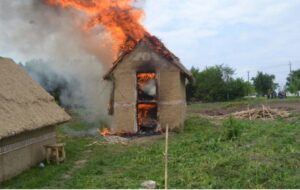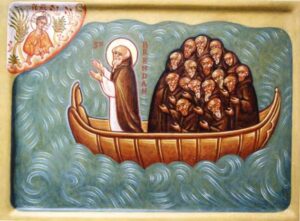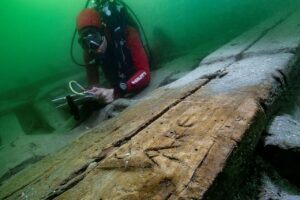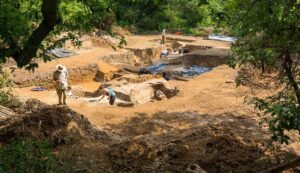Frozen in time, abandoned for 4,500 years, and under threat from an eroding coastline, Scotland’s “Pompeii” is the best-preserved Neolithic settlement in Western Europe. But despite Skara Brae’s immaculate preservation, researchers still don’t know why it was abandoned.
Storm reveals a forgotten village
Before its discovery, Skara Brae was nothing more than a sandy, grassy mound in the Orkney Islands off the coast of Scotland. In 1850, a powerful storm stripped the sand away, revealing bits of a small village.
One of the locals who stumbled upon the ruins was an amateur archaeologist named William Watt. Watt and his colleague, George Petrie, excavated the site and uncovered four houses. After Watt died in 1866, Petrie did not continue their work but did present his findings to the academic community.
The site was largely left alone until 1913 when, over a single weekend, someone plundered the site for artifacts. Soon after, another storm revealed more of the village.
In 1925, officials constructed a seawall to protect the ruins from the ocean. Then in 1927, researchers finally decided to investigate the site properly when the government granted access to archaeologist V. Gordon Childe from the University of Edinburgh.
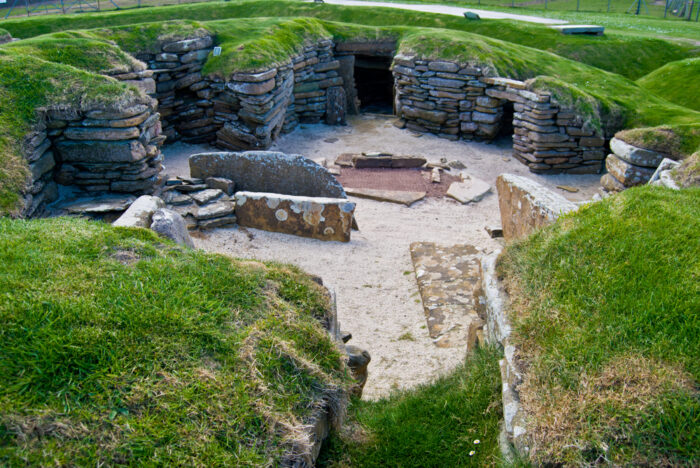
One of Skara Brae’s houses. Photo: Shutterstock
Because of waterlogging and protection from the sand, the site was impressively well-preserved. The researchers found ten flagstone houses built deep into the ground. Each house has Stone Age furniture, including beds, a fireplace, and a Neolithic drainage system. Artifacts included animal bones, tools, jewelry, and pots, as well as a series of carved stone balls with rune-like symbols. Linguists have yet to crack what the runes mean.
Radiocarbon dating suggests most of the discoveries are from around 3180 BC. Around 2500 BC, village life died out. The village shows no sign of advancing further into the Bronze Age, and personal belongings were left behind.
What happened that caused the residents to abandon their homes?
Who lived there?
Archaeologists determined that less than 50 people lived in Skara Brae. The residents were most likely farmers and hunters. Researchers call them the “Grooved Ware People,” after some of the distinctive objects they used. They left traces of their existence at other Neolithic sites in Orkney, including the Ring of Brodgar and the Standing Stones of Stenness.
So why did the small community leave? Some historians believe Skara Brae suffered a catastrophe akin to Pompeii. The area is prone to bad weather, and a particularly dreadful storm could have forced the residents to flee. The site was surrounded by dunes, so powerful winds could have blown sand into the village and buried the site.
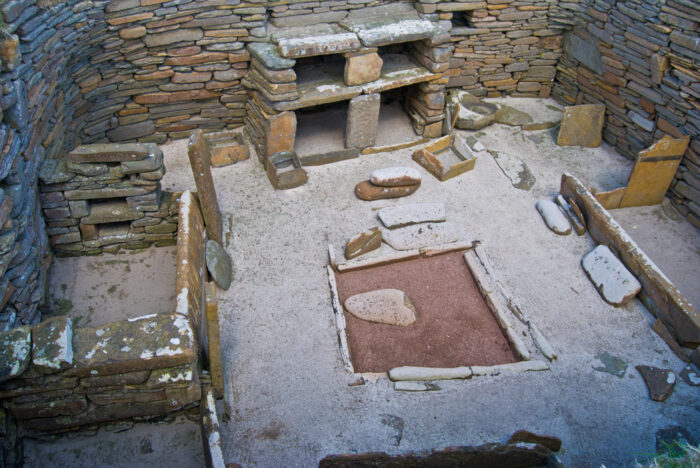
Skara Brae house interior. Photo: Jule Berlin/Shutterstock
Another theory is that natural erosion of the coastline threatened the village crops.
However, the site was most likely abandoned for several reasons. The transition from the Stone Age to the Bronze Age saw drastic social changes. The Bronze Age brought more sophisticated weaponry, more complex architecture, and the emergence of chiefdoms and hierarchies. Villages grew in size, and migration and trade increased. Perhaps the older residents of Skara Brae died off while the youngest moved on, looking for easier lives.
Skara Brae’s abandonment was probably gradual. Straddling two time periods, it succumbed to the tides of change.
Still springing surprises
Recently, Dan Hicks of the University of Oxford tweeted several black-and-white photos from the 1929 Skara Brae excavation, setting off a group of “internet sleuths.” The photos contained four women who people had long believed to be tourists. They were actually archaeologists. The internet sleuths embarked on a mission to uncover their identities.
Eventually, they found their names: Margaret Simpson, Margaret Mitchell, Dame Margaret Cole, and Mary Kennedy. All were students of Professor Childe’s. All but one became professional archaeologists. (Cole pursued a writing career.) The women were trailblazers, with female archaeologists exceedingly rare at the time.
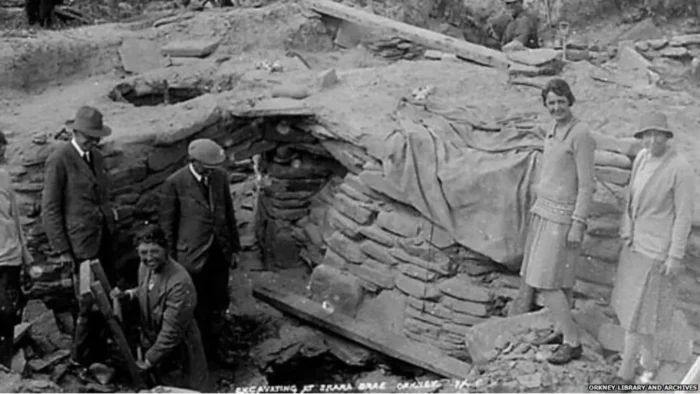
The Skara Brae 1929 excavation. Photo: Orkney Library

